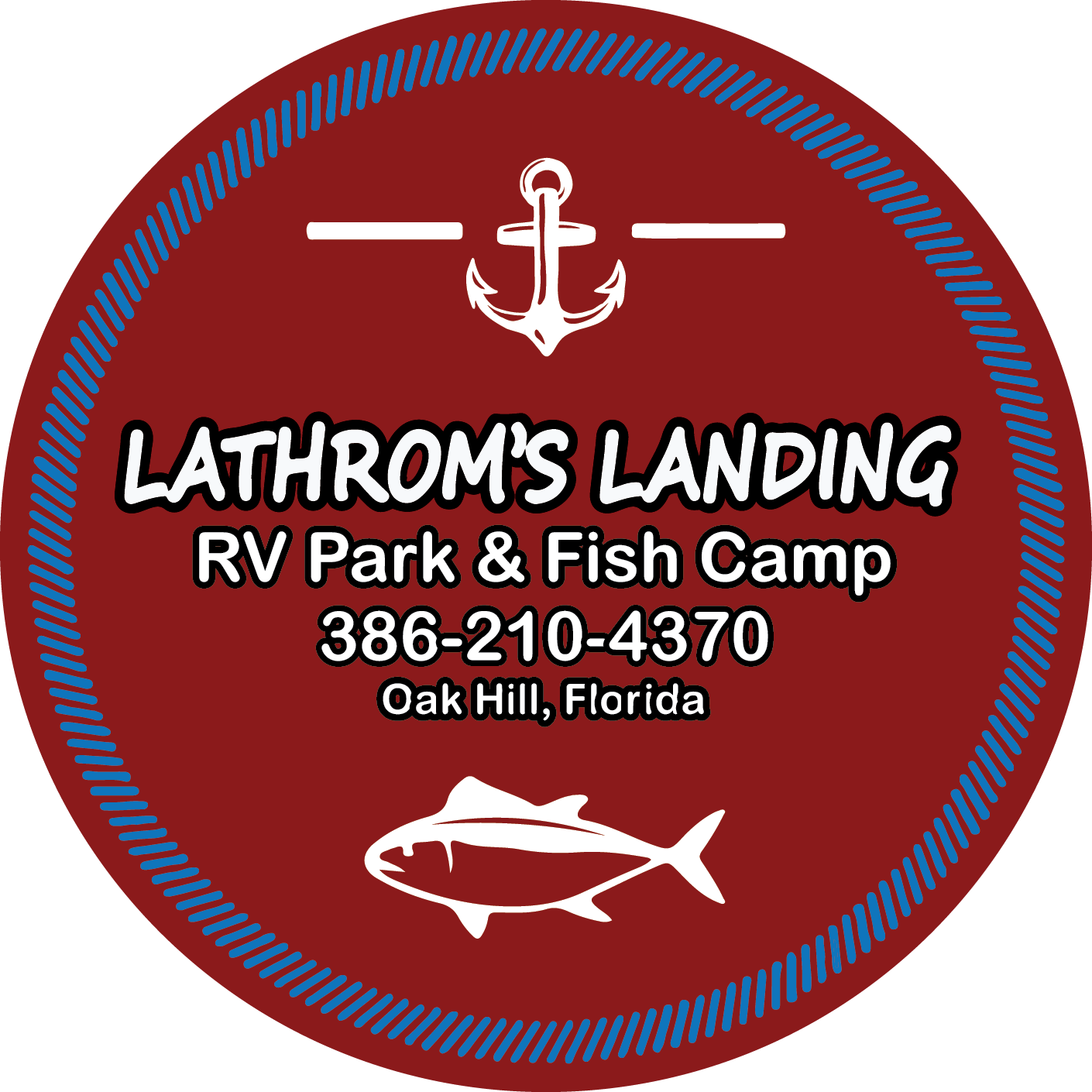From Sight-Casting to Dock Lights, Something for Everybody
Lathrom’s Mosquito Lagoon Fish Camp lies at the northern end of Mosquito Lagoon, an inshore angler’s paradise of grassy flats, deeper basins, scattered islands, mangrove shorelines and sandbars stretching about 20 miles to our south. To our north, the relatively open water of the lagoon proper gives way to a maze of backcountry that extends north 10 miles to the town of New Smyrna Beach and the Ponce de Leon Inlet.
Redfish, Trout, and More
Mosquito Lagoon is widely considered the "redfish capital of the world," not because we necessarily have more or bigger redfish than anywhere else, but because of our year-round lagoon population, which makes this the most unique place in the world to fish for them.
Unlike the vast majority of redfish, which leave the flats for coastal waters as they reach maturity, most of Mosquito Lagoon's redfish never leave the shallow waters of the lagoon. That makes this the only place in the world you can stalk and sight-cast to adult redfish in the 30- to 50-inch range on clear flats.
Of course, there are plenty of slot-size reds too, as well as a remarkable speckled trout fishery that produces as many giant "gator" trout as anywhere else in the world — many of them caught by sight-fishing on the flats.
Black drum are caught seasonally on the flats, and year-round in the deeper holes of the creeks and ICW to the north. The backcountry and ICW also hold snook, tarpon, flounder, sheepshead, jack crevalle, bluefish and ladyfish.
Tackle and Gear
A typical inshore spinning outfit consisting of a 6- to 7-foot medium or medium-light rod paired with a good-quality 2500- to 4000-size reel loaded with 10- or 12-pound test line will cover 90% of Mosquito Lagoon fishing.
For soaking bait for big bull reds in deeper water, step up to stouter 15-or 20-pound gear. It's important to bring these big breeders to the boat quickly to minimize mortality.
Fly casters need a 7- to 9-weight outfit with a good drag and a floating line.
Bait is readily available. A variety of live and frozen baits can be purchased from several land-based bait and tackle outfits, as well as on the water near River Breeze Park from the Livewire Bait Supply boat. During the warmer months, finger mullet are plentiful and easily caught with a cast net. And pinfish can be caught year-round with hook and line, traps, and cast nets.
Sun exposure is obviously an issue. You'll need plenty of lotion and protective gear. High-quality polarized glasses like Costas are an absolute must, both for protection and for seeing fish.
Despite the name of the lagoon, bugs are rarely a major issue for anglers. On warm, still mornings and evenings, no-see-ums can be a problem. Simply covering your skin stops them. Bring cool long pants and long-sleeve shirts and full-coverage shoes.
When fishing with a licensed guide, all licenses and permits are included. BUT PLEASE NOTE that when fishing on your own you most possess a valid Florida saltwater fishing license. If fishing in Merritt Island National Wildlife Refuge, which comprises much of Mosquito Lagoon, you must also have a current, signed MINWR, fishing permit. The permit is free and self-issuing. Simply download, print, and sign it.
Boats and Boating
Contrary to popular belief, you can get around much of Mosquito Lagoon and catch plenty of fish even without the latest and greatest technical poling skiff.
That's not to say that a sub-10-inch draft isn't an advantage. It certainly can be for sight-fishing the flats. But even from a larger bay boat, you can drift the drop-offs, basins, and spoil islands, fish the docks along the ICW, and work the shorelines in the backcountry. An offshore-style deep-vee will be very limiting, but as long as you can idle in less than 18 inches of water or so, you'll be fine.
At the other end of the spectrum, you can fish the lagoon and backcountry very effectively from a car-top aluminum boat, canoe, kayak, or SUP. Cooling afternoon sea breezes occasionally turn the main lagoon choppy, but there's always sheltered water to be fished.
Lathrom’s Mosquito Lagoon Fish Camp has its own on-site ramp for guests, which is suitable for most skiffs, flats boats, and some bay boats. For larger boats, there is an excellent free ramp a short drive north at River Breeze Park. It is suitable for any boat trailer. To our south are several dirt ramps suitable for hand-launching and for small, light trailer skiffs. Bair's Cove ramp, at Haulover Canal, is paved and offers quick access to the central and southern part of the Mosquito Lagoon and to the northern extremities of the Indian River Lagoon. A ramp in Edgewater is convenient to the northern backcountry areas, New Smyrna Beach, and Ponce Inlet.
Seasons
Redfish and trout are caught all year in Mosquito Lagoon, but conditions and techniques vary by season. In the winter and spring, the water is low, clear, and cool. On sunny days, both redfish and trout move onto the shallow flats, where the water warms quickly in the sun. This makes for ideal sight-fishing conditions. Fishing is often best in the afternoon or evening, when water temperatures are highest. Baitfish are relatively scarce, and shrimp and crabs make up most of the forage in the lagoon.
In the warmer months, the water in the lagoon is less clear, but sight-fishing is still possible on the grass flats and along the edges in slightly deeper water. Baitfish, particularly mullet, are plentiful and make up most of the redfish and trout's diet. Fishing is typically best in the very early morning and in the afternoons and evenings after rainstorms have cooled the water.

